By Leen Randell
Updated: Jul 19, 2024
10 Best Herbal Creams For Open Wounds
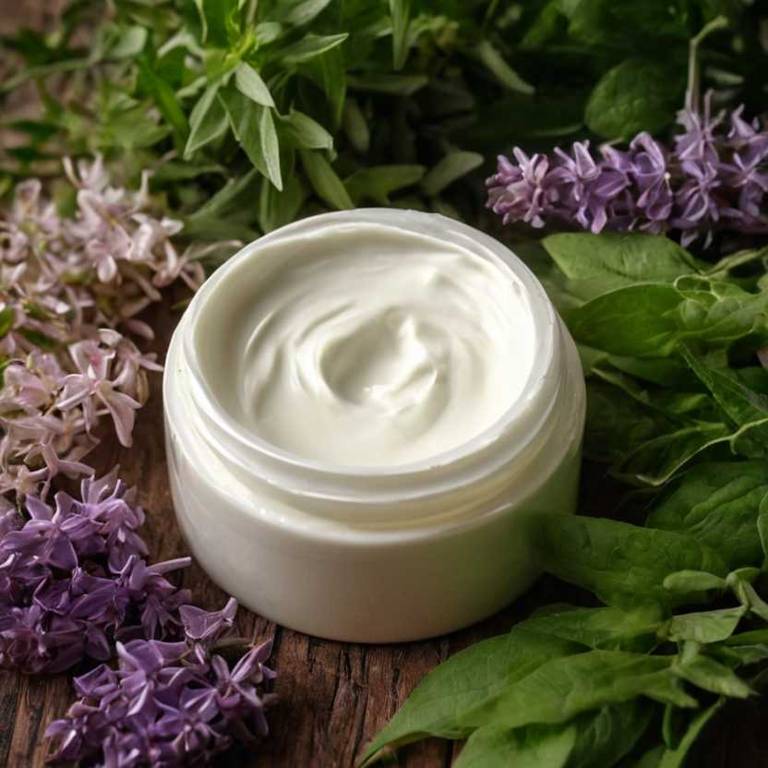
Herbal creams for open wounds are topical preparations made from plant extracts that help accelerate the healing process and reduce the risk of infection.
These creams contain antimicrobial and anti-inflammatory properties that soothe and protect open wounds. For example, creams containing aloe vera, tea tree oil, and calendula have been effective in promoting wound healing and reducing scarring.
By using these creams, individuals with open wounds can experience faster recovery and reduced pain, improving their overall quality of life.
The following article describes in detail the most important creams for open wounds, including medicinal properties, parts of herbs to use, and recipes for preparations.
- 1. Aloe vera
- 2. Calendula officinalis
- 3. Centella asiatica
- 4. Symphytum officinale
- 5. Melaleuca alternifolia
- 6. Matricaria chamomilla
- 7. Plantago major
- 8. Allium sativum
- 9. Zingiber officinale
- 10. Echinacea angustifolia
- What is the best combination of herbal creams to use for open wounds?
- What ailments similar to open wounds are treated with herbal creams?
1. Aloe vera
Aloe vera, also known as aloe, creams helps with open wounds because of its unique combination of properties.
The gel inside the aloe leaf contains anti-inflammatory compounds that reduce swelling and promote blood flow to the affected area. Aloe vera's antibacterial and antifungal agents prevent infection, while its vitamin A, C, and E content promotes tissue repair and collagen production, accelerating the healing process and leaving the wound stronger and healthier.
This makes aloe vera a popular natural remedy for wound care.
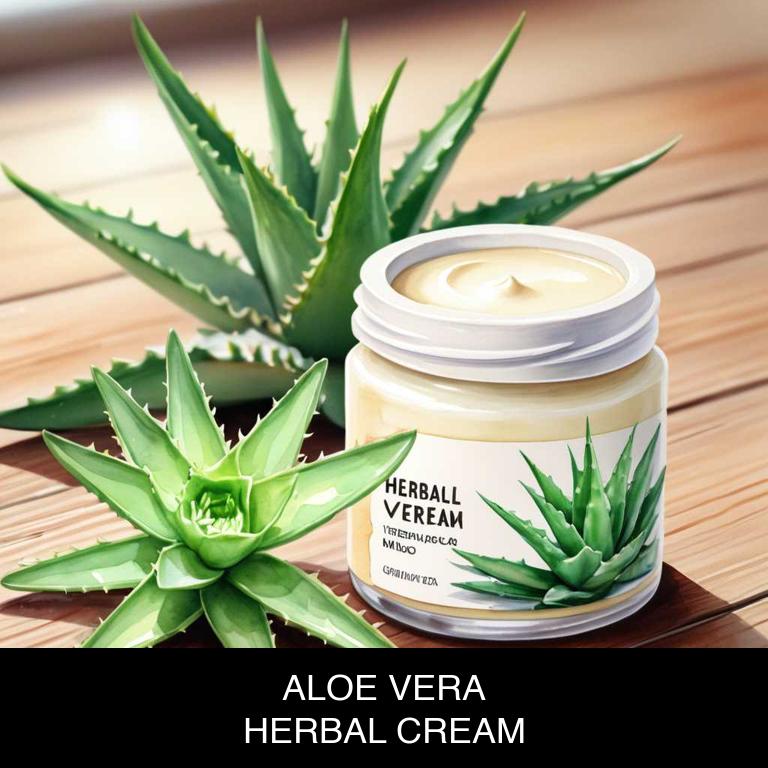
Medicinal Constituents
The list below shows the primary medicinal constituents in Aloe vera creams that help with open wounds.
- Aloin: Aloein is a anthraquinone glycoside found in Aloe vera that helps with wound healing by promoting cell proliferation and tissue repair, thereby accelerating the healing process.
- Acemannan: Acemannan is a polysaccharide found in Aloe vera that stimulates the production of growth factors, which are essential for wound healing, tissue regeneration, and the prevention of infection.
- Vitamins and minerals: Aloe vera creams contain a rich source of vitamins (A, C, and E) and minerals (zinc, copper, and iron) that provide antioxidant properties, boost the immune system, and promote wound healing by protecting the wound from infection and promoting tissue repair.
Parts Used
The list below shows the primary parts of aloe used to make creams for open wounds.
- Leaves: They contain the highest concentration of gel, which is used for its soothing and antibacterial properties to aid in wound healing.
- Seeds: Aloe vera seeds contain various bioactive compounds, including fatty acids and glycosides, which are used in creams for their anti-inflammatory and antioxidant properties.
- Stems: Aloe vera stems contain a compound called aloin, which is used in creams for its antibacterial and antifungal properties to prevent infection in wounds.
Quick Recipe
The following recipe gives a procedure to make a basic aloe for open wounds.
- Gather 1 cup of aloe vera gel from 3 to 4 aloe vera leaves that have been soaked in water for 2 hours.
- Combine 1/4 cup of coconut oil with 2 tablespoons of beeswax in a double boiler over low heat.
- Add 2 tablespoons of shea butter and 1 teaspoon of vitamin e oil to the coconut oil mixture.
- Whip 1 cup of distilled water with 1 teaspoon of xanthan gum using an electric mixer for 5 minutes.
- Mix the aloe vera gel with the coconut oil mixture and the whipped water mixture in a bowl until smooth.
2. Calendula officinalis
Calendula officinalis, also known as pot marigold, creams helps with open wounds because of its anti-inflammatory and antimicrobial properties.
The plant's active compounds, such as triterpenoids and flavonoids, accelerate tissue repair and reduce swelling. Calendula cream also promotes wound closure by enhancing collagen synthesis and improving tissue strength.
Additionally, its antimicrobial properties help prevent infection by inhibiting the growth of bacteria, fungi, and other pathogens, creating a conducive environment for wound healing.
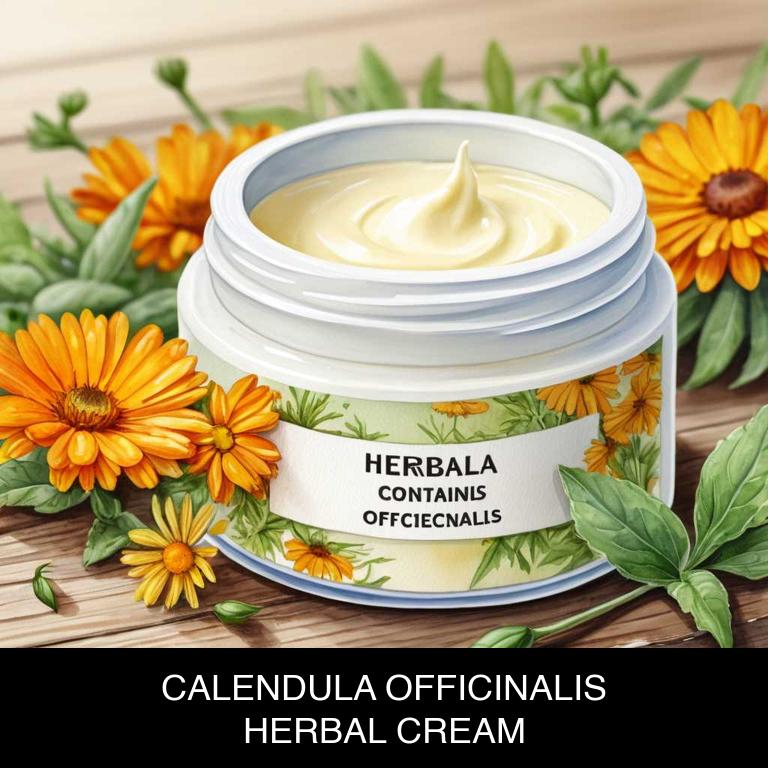
Medicinal Constituents
The list below shows the primary medicinal constituents in Calendula officinalis creams that help with open wounds.
- Triterpene esters: These compounds help to reduce inflammation and promote wound healing by modulating the immune response and inhibiting the production of pro-inflammatory mediators.
- Flavonoids: Quercetin, a flavonoid present in Calendula, has anti-inflammatory and antioxidant properties, which aid in reducing oxidative stress and promoting tissue repair in open wounds.
- Naphthoquinones: These compounds exhibit antimicrobial and antioxidant activities, helping to prevent infection and promote wound healing by reducing oxidative stress and promoting tissue regeneration.
Parts Used
The list below shows the primary parts of pot marigold used to make creams for open wounds.
- Flowers: The flowers of Calendula officinalis are the most commonly used part due to their high content of bioactive compounds and anti-inflammatory properties.
- Leaves: The leaves of Calendula officinalis are used as they are rich in flavonoids and saponins, which contribute to their wound-healing and soothing effects.
- Seeds: The seeds of Calendula officinalis are used to provide a rich source of essential fatty acids and antioxidants, which can aid in the skin regeneration process.
Quick Recipe
The following recipe gives a procedure to make a basic pot marigold for open wounds.
- Harvest 20-30 fresh calendula officinalis flowers and clean them thoroughly with distilled water.
- Steep 10 grams of the cleaned calendula flowers in 500 milliliters of distilled water for 20-30 minutes.
- Strain the mixture through cheesecloth or a coffee filter into a separate container and discard solids.
- Mix 500 milliliters of the strained calendula infusion with 250 grams of a carrier oil such as coconut oil or sweet almond oil.
- Whip the mixture in a double boiler or a heat-resistant mixing bowl set over a pan of simmering water for 10-15 minutes until thickened.
3. Centella asiatica
Centella asiatica, also known as asiatic pennywort, creams helps with open wounds because of its remarkable wound-healing properties.
The cream's active compounds, including triterpenoids and saponins, enhance tissue repair and regeneration by stimulating collagen synthesis and improving blood vessel formation. Additionally, Centella asiatica's anti-inflammatory and antioxidant properties help reduce oxidative stress and promote a healthy wound environment, facilitating faster healing and reducing the risk of infection.
This makes it an effective treatment for various types of open wounds.
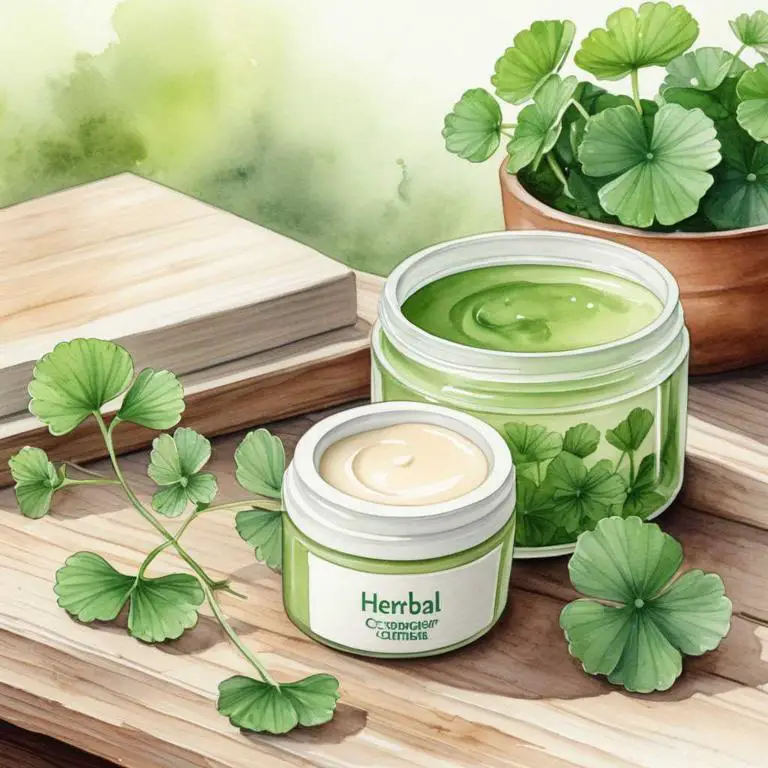
Medicinal Constituents
The list below shows the primary medicinal constituents in Centella asiatica creams that help with open wounds.
- Asiatic acid: This triterpenoid compound promotes wound healing by enhancing collagen synthesis, improving tissue repair, and reducing inflammation.
- Madecassoside: A glycoside present in Centella asiatica, madecassoside exhibits anti-inflammatory and antioxidant properties, which help to accelerate wound healing and reduce the risk of infection.
- Madecassic acid: Another triterpenoid compound found in Centella asiatica, madecassic acid has been shown to promote angiogenesis (formation of new blood vessels), which is essential for wound healing and tissue repair.
Parts Used
The list below shows the primary parts of asiatic pennywort used to make creams for open wounds.
- Leaves: Used due to their high content of triterpenoids and other bioactive compounds that aid in wound healing and tissue repair.
- Roots: Utilized for their saponins and triterpenoids, which help reduce inflammation and promote wound closure.
- Barks: Employed for their triterpenoids and flavonoids, which possess antimicrobial and anti-inflammatory properties to accelerate wound healing.
Quick Recipe
The following recipe gives a procedure to make a basic asiatic pennywort for open wounds.
- Harvest fresh centella asiatica leaves and stems in early morning to minimize moisture loss.
- Clean the harvested plant material with distilled water to remove dirt and debris.
- Combine 100g of centella asiatica leaves and stems with 200ml of distilled water in a saucepan.
- Simmer the mixture at 100c for 30 minutes to extract the active compounds.
- Blend the cooled extract with 100g of shea butter and 50g of coconut oil to create a smooth cream.
4. Symphytum officinale
Symphytum officinale, also known as comfrey, creams helps with open wounds because of its unique combination of anti-inflammatory and antiseptic properties.
The high concentration of allantoin in comfrey accelerates wound healing by stimulating collagen synthesis and promoting tissue repair. The cream's soothing and protective effects also help to reduce pain and discomfort, while its antimicrobial properties prevent infection and promote a clean environment for healing.
This makes comfrey cream an excellent topical treatment for open wounds.
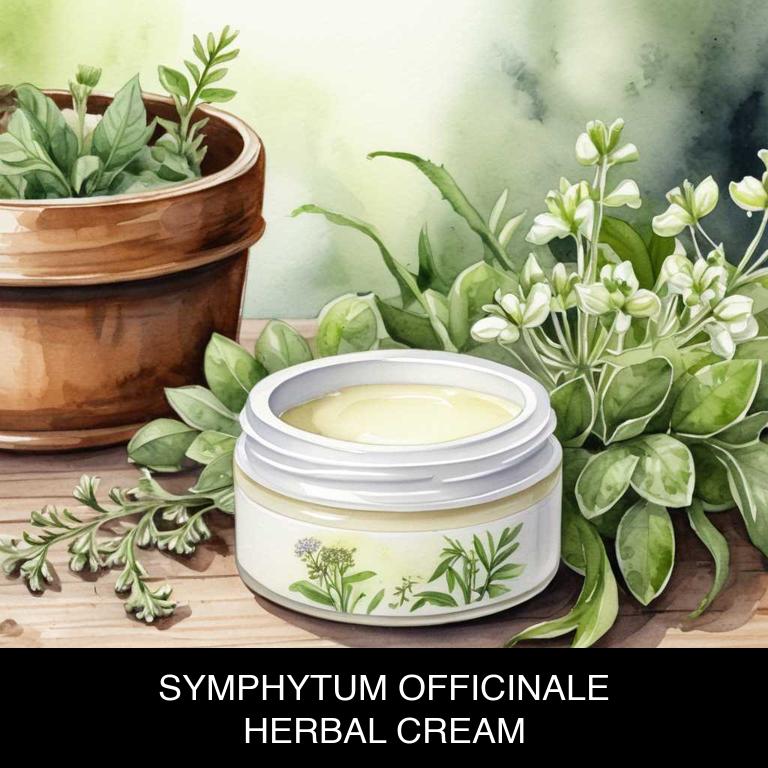
Medicinal Constituents
The list below shows the primary medicinal constituents in Symphytum officinale creams that help with open wounds.
- Allantoin: Acts as a tissue healer by promoting cell proliferation and tissue regeneration, thereby aiding in the closure of wounds.
- Rutoside: Exhibits anti-inflammatory and antioxidant properties, reducing swelling and promoting a healthy environment for wound healing.
- N-o-methylflavonoid glycosides: Display antimicrobial activity, inhibiting the growth of bacteria and other pathogens that can impede wound healing.
Parts Used
The list below shows the primary parts of comfrey used to make creams for open wounds.
- Leaves: The leaves of Symphytum officinale are used because they contain allantoin, a compound that helps to promote wound healing and tissue regeneration.
- Roots: The roots of Symphytum officinale are used because they contain a high concentration of allantoin and other mucilages, which help to soothe and protect the wound.
- Rhyzomes: The rhyzomes of Symphytum officinale are used because they also contain allantoin and other compounds that aid in wound healing and tissue repair.
Quick Recipe
The following recipe gives a procedure to make a basic comfrey for open wounds.
- Harvest 1 pound of fresh symphytum officinale leaves in the early morning when they are at their peak potency.
- Clean and dry the leaves thoroughly to remove any dirt or debris with a clean cloth.
- Steep 1 cup of dried symphytum officinale leaves in 2 cups of boiling water for 10 to 15 minutes to create a strong infusion.
- Mix 1 cup of the cooled infusion with 1/2 cup of beeswax and 1/4 cup of coconut oil in a double boiler over low heat.
- Stir the mixture constantly until it thickens and reaches a consistency similar to regular body lotion after 30 minutes.
5. Melaleuca alternifolia
Melaleuca alternifolia, also known as tea tree, creams helps with open wounds because of its antibacterial and antifungal properties.
The active compounds in tea tree oil, such as terpinen-4-ol and cinnamaldehyde, have been shown to inhibit the growth of bacteria and fungi that can cause infections in open wounds. This helps to promote a healthy environment for the wound to heal, reducing the risk of complications and promoting faster recovery.
Tea tree creams can be used topically to aid in the healing process of open wounds.
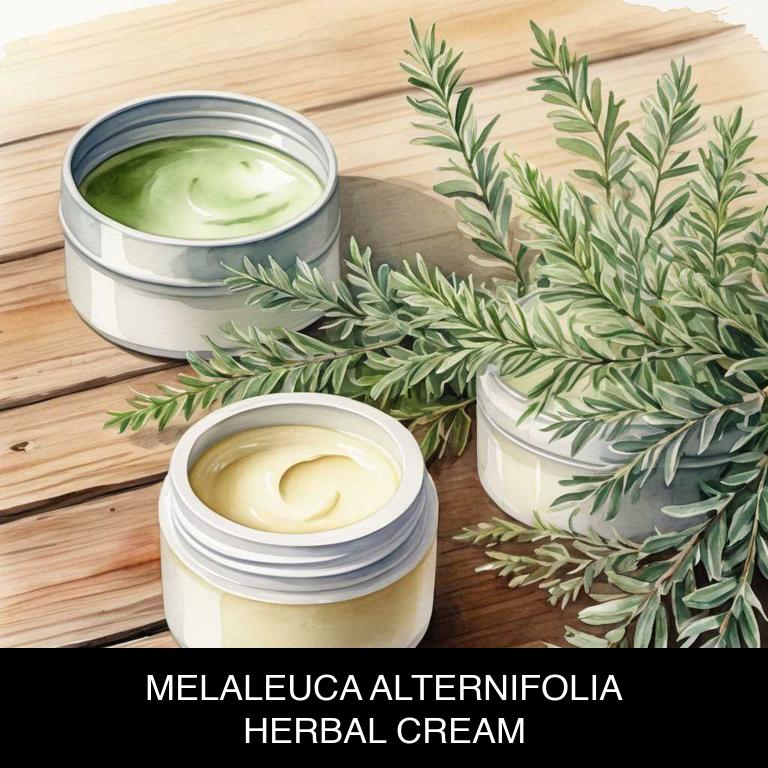
Medicinal Constituents
The list below shows the primary medicinal constituents in Melaleuca alternifolia creams that help with open wounds.
- Cineole: This monoterpene helps with wound healing by reducing bacterial growth and inflammation, thereby preventing infection and promoting a clean environment for wound closure.
- Cymene: As a monoterpenic hydrocarbon, cymene exhibits antimicrobial properties, which aid in the prevention of wound infections and promote a healthy wound environment.
- Terpinen-4-ol: This monoterpenoid alcohol has potent antimicrobial and anti-inflammatory properties, which help to reduce the risk of wound infections, promote wound healing, and minimize scarring.
Parts Used
The list below shows the primary parts of tea tree used to make creams for open wounds.
- Leaves: They contain a high concentration of terpinen-4-ol, an antiseptic and antimicrobial compound that helps to prevent infection and promote healing in open wounds.
- Seeds: They contain compounds that have anti-inflammatory and antimicrobial properties, which can aid in reducing pain and preventing infection in open wounds.
- Barks: They contain antimicrobial compounds that help to prevent infection and promote healing in open wounds.
Quick Recipe
The following recipe gives a procedure to make a basic tea tree for open wounds.
- Harvest 20-30 fresh leaves of melaleuca alternifolia in the morning when essential oils are at their highest concentration.
- Steam distill the leaves to extract the essential oil using a distillation apparatus for 2-3 hours.
- Mix 1-2% of the distilled essential oil with a base of 70% coconut oil and 30% beeswax in a double boiler.
- Heat the mixture gently for 10-15 minutes or until the beeswax is fully dissolved and the mixture has reached 120°f to 140°f.
- Pour the mixture into a clean container and let it cool and solidify for 30-40 minutes before use.
6. Matricaria chamomilla
Matricaria chamomilla, also known as chamomile, creams helps with open wounds because of its antimicrobial and anti-inflammatory properties.
The active compounds in chamomile, such as apigenin and bisabolol, have been shown to inhibit the growth of bacteria and other microorganisms that can cause infection. Additionally, the anti-inflammatory properties of chamomile help to reduce redness, swelling, and pain associated with open wounds, promoting a faster and more effective healing process.
This makes chamomile cream a popular natural remedy for wound care.
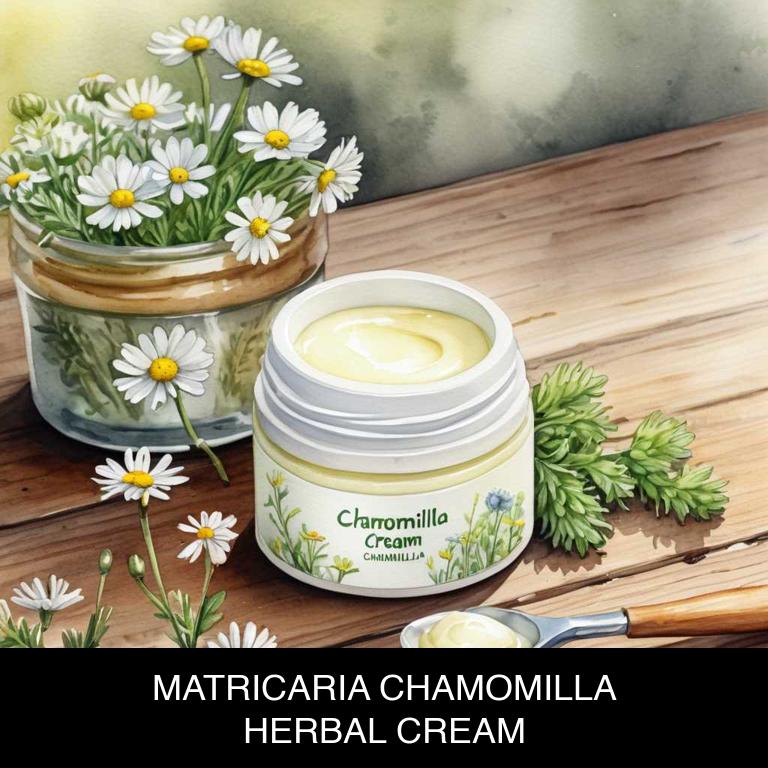
Medicinal Constituents
The list below shows the primary medicinal constituents in Matricaria chamomilla creams that help with open wounds.
- Apigenin: This flavonoid acts as an anti-inflammatory and antimicrobial agent, reducing the risk of infection and promoting wound healing.
- Luteolin: As a flavonoid with potent antioxidant and anti-inflammatory properties, luteolin helps protect the wound from oxidative stress and promotes tissue repair.
- Α-bisabolol: This sesquiterpene alcohol exhibits anti-inflammatory and antimicrobial activities, reducing inflammation and preventing infection in open wounds, thereby promoting faster healing.
Parts Used
The list below shows the primary parts of chamomile used to make creams for open wounds.
- Flowers: Used due to their high content of flavonoids and terpenoids, which have anti-inflammatory and antimicrobial properties.
- Leaves: Used due to their antioxidant properties and ability to aid in wound healing and tissue repair.
- Seeds: Used due to their minor presence of anti-inflammatory compounds, which may aid in wound healing.
Quick Recipe
The following recipe gives a procedure to make a basic chamomile for open wounds.
- Infuse dried matricaria chamomilla flowers in hot distilled water for 5 minutes at a ratio of 1:5.
- Strain the infusion through a cheesecloth into a clean glass container to remove solids.
- Combine the infused liquid with a base oil such as sweet almond oil in a ratio of 1:3.
- Heat the mixture gently over low heat for 10 minutes to facilitate absorption.
- Allow the mixture to cool and thicken before transferring it into a storage container.
7. Plantago major
Plantago major, also known as plantain, creams helps with open wounds because of its antiseptic and anti-inflammatory properties.
The plant's leaves contain compounds that promote wound healing by reducing inflammation, preventing infection, and stimulating the growth of new tissue. The cream also contains antioxidants that protect the wound from further damage, promoting a healthy environment for healing.
This natural remedy has been used for centuries to aid in the recovery of open wounds, making it a popular choice among those seeking a more holistic approach to wound care.
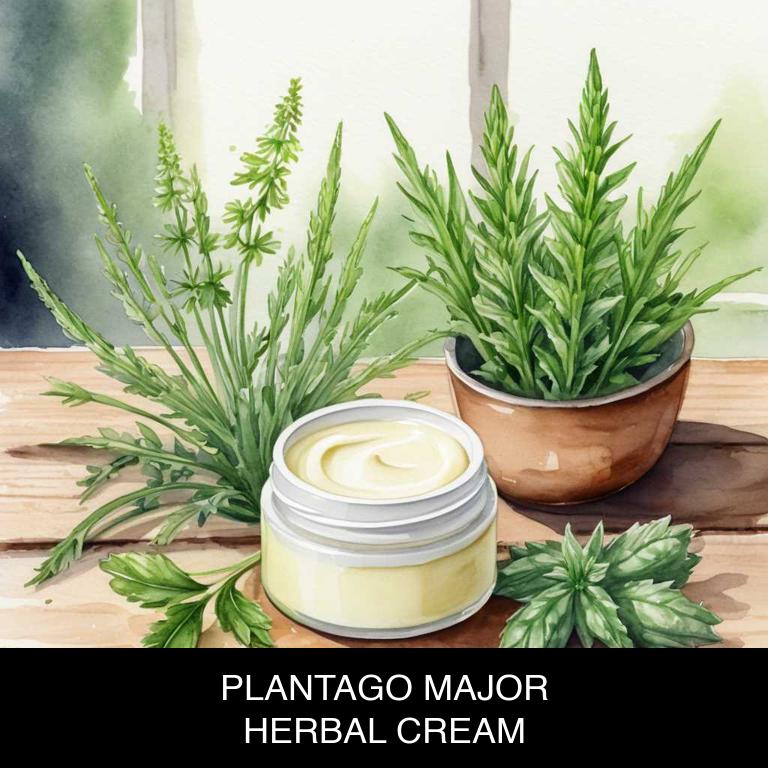
Medicinal Constituents
The list below shows the primary medicinal constituents in Plantago major creams that help with open wounds.
- Apolipoprotein a-1: This protein helps with wound healing by promoting the migration and proliferation of cells, reducing inflammation, and improving tissue regeneration.
- Aucubin: As a phenolic glycoside, aucubin exhibits antimicrobial and anti-inflammatory properties, which can help prevent infections and promote a favorable environment for wound healing.
- Saponins: These triterpenoid glycosides exhibit antimicrobial, anti-inflammatory, and antioxidant properties, which can help reduce the risk of infection, minimize inflammation, and promote tissue regeneration in open wounds.
Parts Used
The list below shows the primary parts of plantain used to make creams for open wounds.
- Leaves: They are used to make creams for open wounds due to their mucilaginous properties, which provide soothing and protective effects.
- Roots: They are used to create creams with anti-inflammatory properties, helping to reduce swelling and promote healing.
- Seeds: They are used to make creams that contain saponins, which have antimicrobial properties, aiding in the prevention of infections in open wounds.
Quick Recipe
The following recipe gives a procedure to make a basic plantain for open wounds.
- Harvest 20-30 grams of dried plantago major leaves and flowers from a clean and organic source.
- Grind 15 grams of the harvested plantago major leaves and flowers into a fine powder.
- Combine the ground plantago major powder with 20 grams of beeswax and 10 grams of coconut oil.
- Heat the mixture in a double boiler for 10-15 minutes until it reaches 180-190 degrees fahrenheit.
- Pour the mixture into a sterile container and let it cool and solidify for 30-60 minutes.
8. Allium sativum
Allium sativum, also known as garlic, creams helps with open wounds because of its antimicrobial and antiseptic properties.
The active compounds in garlic, such as allicin and diallyl sulfide, have been shown to inhibit the growth of bacteria, fungi, and viruses that can cause infections in open wounds. By reducing the risk of infection, garlic creams promote a faster healing process, minimize scarring, and reduce the risk of complications.
This natural remedy has been used for centuries to promote wound healing and prevent infection.
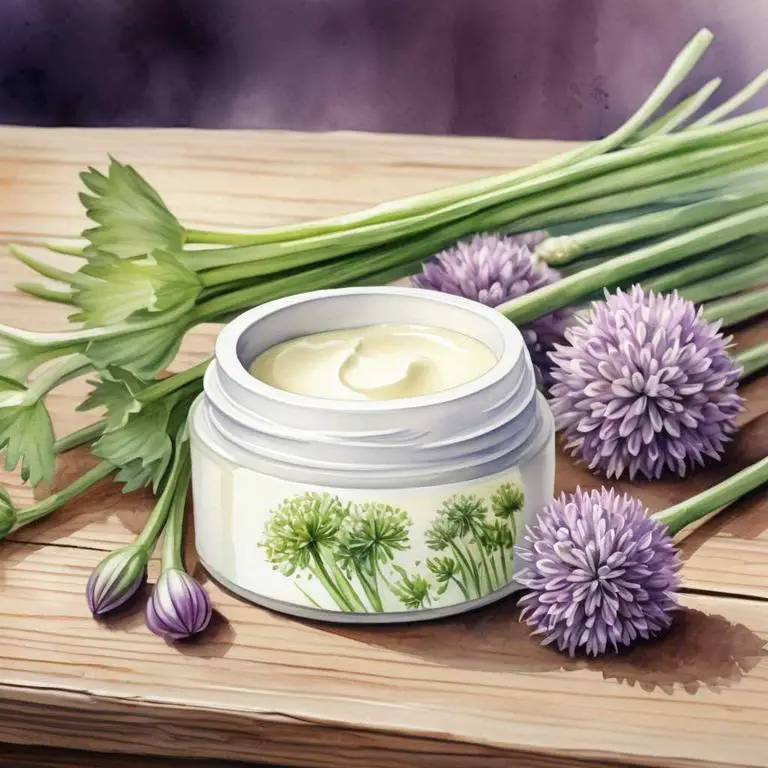
Medicinal Constituents
The list below shows the primary medicinal constituents in Allium sativum creams that help with open wounds.
- Allicin: Allicin, a sulfur-containing compound, acts as an antimicrobial agent, inhibiting the growth of bacteria, fungi, and viruses that can infect open wounds and cause infection.
- Quercetin: Quercetin, a flavonoid phenolic compound, has anti-inflammatory properties that help reduce swelling and promote wound healing by inhibiting the production of pro-inflammatory cytokines.
- S-allylcysteine sulfoxide: SACS, a sulfur-containing compound, has been shown to possess antimicrobial and anti-inflammatory properties, which can help prevent infection and promote wound healing by reducing inflammation and oxidative stress.
Parts Used
The list below shows the primary parts of garlic used to make creams for open wounds.
- Rhyzomes: These are the most commonly used part due to their high concentration of compounds with antimicrobial and antiseptic properties.
- Leaves: The leaves of Allium sativum contain compounds that promote wound healing and reduce inflammation.
- Buds: The buds or immature flowers of garlic have been used to create creams that help to protect wounds from infection and promote healing.
Quick Recipe
The following recipe gives a procedure to make a basic garlic for open wounds.
- Crush 300 grams of fresh allium sativum roots into fine powder using a mortar and pestle for 10 minutes.
- Combine 100 grams of the powder with 200 grams of coconut oil in a double boiler for 30 minutes.
- Add 10 grams of beeswax and 10 grams of vitamin e oil to the mixture and stir for 5 minutes.
- Heat the mixture to 60°c and then remove it from heat and let it cool for 20 minutes.
- Strain the cooled mixture through a cheesecloth into a bowl and discard the solids for 5 minutes.
9. Zingiber officinale
Zingiber officinale, also known as ginger, creams helps with open wounds because of its anti-inflammatory and antimicrobial properties.
The active compounds in ginger, such as gingerols and shogaols, promote blood flow to the affected area, accelerating the healing process. Additionally, ginger's antimicrobial properties inhibit the growth of bacteria and fungi, reducing the risk of infection.
This combination of properties makes ginger creams an effective natural remedy for promoting wound healing and tissue repair, ultimately leading to faster recovery and reduced scarring.
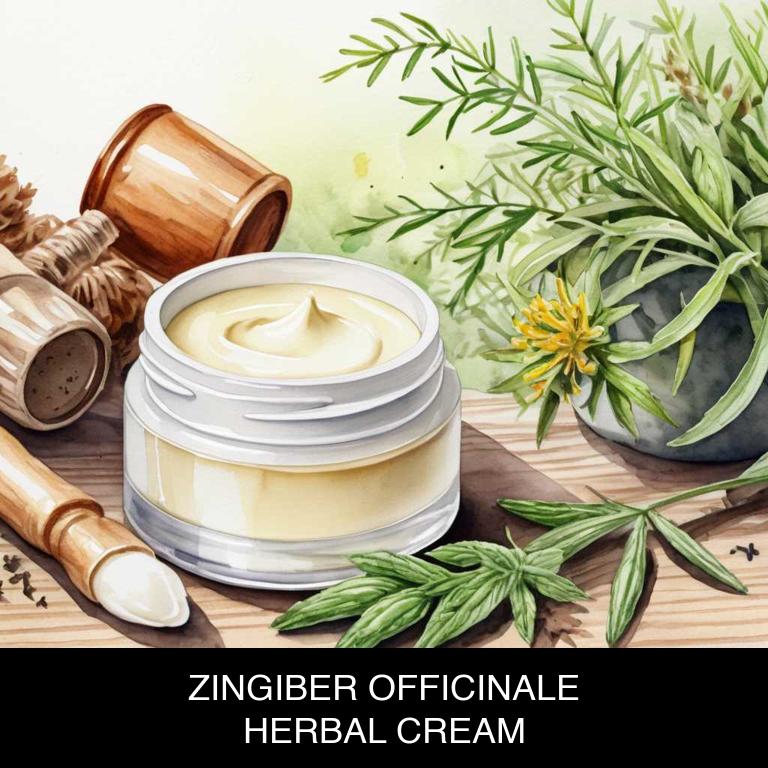
Medicinal Constituents
The list below shows the primary medicinal constituents in Zingiber officinale creams that help with open wounds.
- Gingerol: Gingerol has anti-inflammatory properties that can help reduce swelling and promote faster healing of open wounds.
- Shogaol: Shogaol has antimicrobial properties that can help prevent infection and promote a clean environment for wound healing.
- Curcumin: Curcumin has antioxidant properties that can help protect the wound from oxidative stress and promote the growth of new tissue.
Parts Used
The list below shows the primary parts of ginger used to make creams for open wounds.
- Buds: Zingiber officinale buds are used for their antimicrobial properties, which help in preventing infection and promoting a healthy wound environment.
Quick Recipe
The following recipe gives a procedure to make a basic ginger for open wounds.
- Extract 2 tablespoons of zingiber officinale root in 4 cups of boiling water for 5 minutes to create a strong infusion.
- Strain the infusion through a cheesecloth or fine mesh into a clean glass container to remove solids.
- Mix the infused liquid with 1 cup of distilled water and 1 tablespoon of beeswax in a double boiler.
- Heat the mixture in a double boiler for 10 minutes or until the beeswax is fully incorporated.
- Allow the mixture to cool and thicken before transferring it to a clean glass jar for storage.
10. Echinacea angustifolia
Echinacea angustifolia, also known as Kansas coneflower, creams helps with open wounds because of its exceptional healing properties.
The cream's active compounds, such as alkylamides and polyacetylenes, possess antimicrobial and anti-inflammatory properties, which aid in preventing infection and promoting wound closure. Additionally, the cream's ability to enhance collagen synthesis and tissue repair accelerates the healing process, allowing for faster recovery and reduced scarring.
This makes Echinacea angustifolia creams a valuable addition to wound care management.
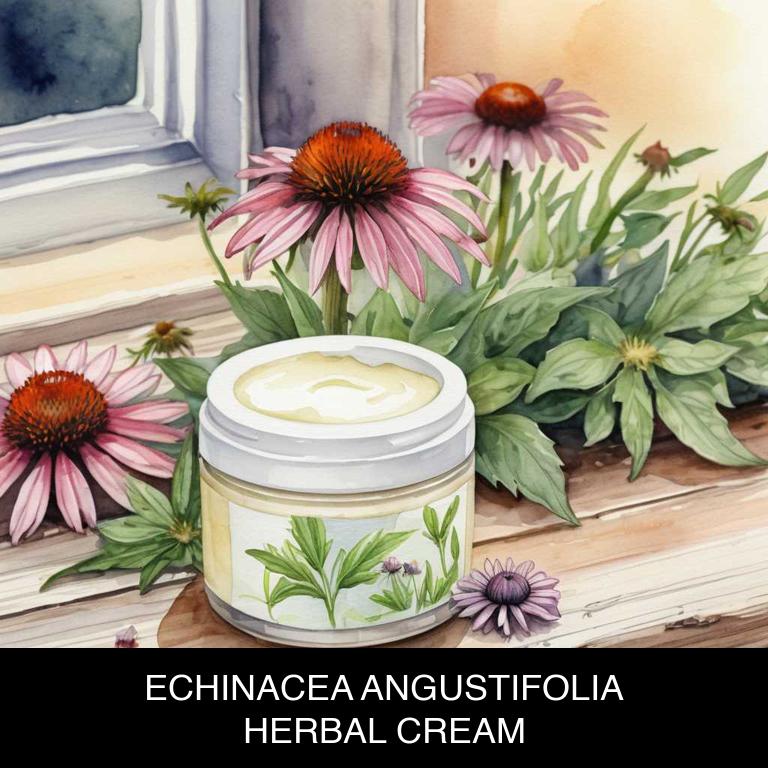
Medicinal Constituents
The list below shows the primary medicinal constituents in Echinacea angustifolia creams that help with open wounds.
- Icariin: Icariin is a flavonoid glycoside that helps promote wound healing by enhancing collagen synthesis and improving the overall structure of the wound tissue.
- Alkylamides: Alkylamides are a class of phenolic compounds that exhibit anti-inflammatory properties, which help reduce swelling and promote a healthy wound environment.
- Cichoric acid: Cichoric acid is a caffeic acid derivative that possesses antimicrobial properties, which help prevent wound infection and promote a clean wound environment conducive to healing.
Parts Used
The list below shows the primary parts of kansas coneflower used to make creams for open wounds.
- Roots: They are used because they contain high levels of echinacoside, a compound with anti-inflammatory and wound-healing properties.
- Leaves: They are used because they contain flavonoids and phenolic acids that have antimicrobial properties to prevent infection in open wounds.
- Seeds: They are used because they contain isobutylamides that have anti-inflammatory effects to aid in the healing process of open wounds.
Quick Recipe
The following recipe gives a procedure to make a basic kansas coneflower for open wounds.
- Harvest 100 grams of dried echinacea angustifolia roots from a reputable supplier on a sunny day.
- Dry the harvested roots in a low-temperature oven at 150°f for 2 hours to remove moisture.
- Grind 50 grams of dried echinacea angustifolia roots into a fine powder using a coffee grinder within 15 minutes.
- Mix 10 grams of the powdered echinacea angustifolia with 50 grams of beeswax and 50 grams of coconut oil in a double boiler.
- Stir the mixture continuously for 30 minutes or until it reaches a smooth consistency and cools to room temperature.
What is the best combination of herbal creams to use for open wounds?
The best combination of herbal creams that help with open wounds is a blend of aloe vera, tea tree oil, and chamomile.
Aloe vera accelerates the healing process by soothing and moisturizing the skin, while tea tree oil's antiseptic properties combat bacteria and prevent infection. Chamomile calms inflammation and reduces pain, promoting a faster recovery.
This potent trio of herbal creams not only accelerates the healing process but also reduces scarring and promotes healthy tissue growth, making it an effective solution for open wounds.
What ailments similar to open wounds are treated with herbal creams?
Ailments similar to open wounds that are treated with herbal creams are skin irritations, minor burns, and scrapes.
Herbal creams containing ingredients like aloe vera, tea tree oil, and calendula can provide soothing relief from redness, itching, and inflammation.
These natural remedies can also promote wound healing by boosting collagen production, reducing scarring, and preventing infection.